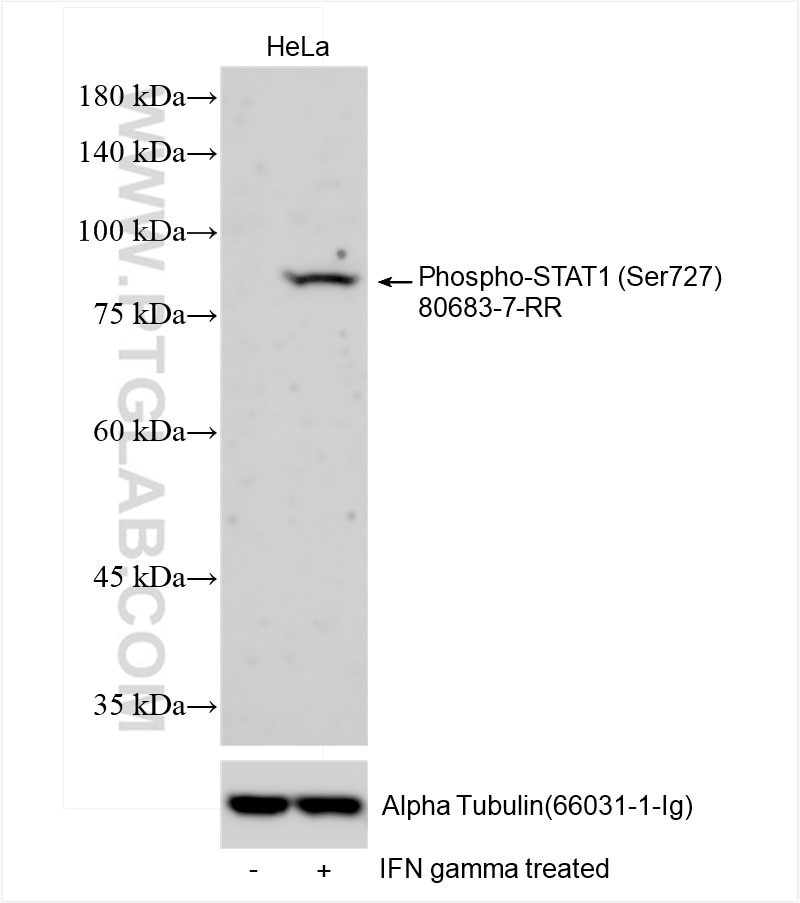Validation Data Gallery
Tested Applications
| Positive WB detected in | IFN gamma treated HeLa cells |
Recommended dilution
| Application | Dilution |
|---|---|
| Western Blot (WB) | WB : 1:1000-1:4000 |
| It is recommended that this reagent should be titrated in each testing system to obtain optimal results. | |
| Sample-dependent, Check data in validation data gallery. | |
Published Applications
| WB | See 1 publications below |
Product Information
80683-7-RR targets Phospho-STAT1 (Ser727) in WB, ELISA applications and shows reactivity with human samples.
| Tested Reactivity | human |
| Cited Reactivity | human |
| Host / Isotype | Rabbit / IgG |
| Class | Recombinant |
| Type | Antibody |
| Immunogen |
Peptide 相同性解析による交差性が予測される生物種 |
| Full Name | signal transducer and activator of transcription 1, 91kDa |
| Calculated molecular weight | 83 kDa |
| Observed molecular weight | 84-91 kDa |
| GenBank accession number | BC002704 |
| Gene Symbol | STAT1 |
| Gene ID (NCBI) | 6772 |
| RRID | AB_3670483 |
| Conjugate | Unconjugated |
| Form | |
| Form | Liquid |
| Purification Method | Protein A purfication |
| UNIPROT ID | P42224 |
| Storage Buffer | PBS with 0.02% sodium azide and 50% glycerol{{ptg:BufferTemp}}7.3 |
| Storage Conditions | Store at -20°C. Stable for one year after shipment. Aliquoting is unnecessary for -20oC storage. |
Background Information
STAT1 (signal transducers and activators of transcription 1) is a member of the STAT protein family. STAT family members are phosphorylated by the receptor associated kinases, and then form homo-or heterodimers that translocate to the cell nucleus where they act as transcription activators. STAT1 activating phosphorylation at Ser727 is p38-dependant duringlipotoxic stress. MLK3 activation triggers a MAPK signaling cascade resulting in STAT1 Ser727 phosphorylation. The phosphorylation of STAT1 Ser727 increases its nuclear localization, and transcriptional activity. (PMID: 28262979).
Protocols
| Product Specific Protocols | |
|---|---|
| WB protocol for Phospho-STAT1 (Ser727) antibody 80683-7-RR | Download protocol |
| Standard Protocols | |
|---|---|
| Click here to view our Standard Protocols |

